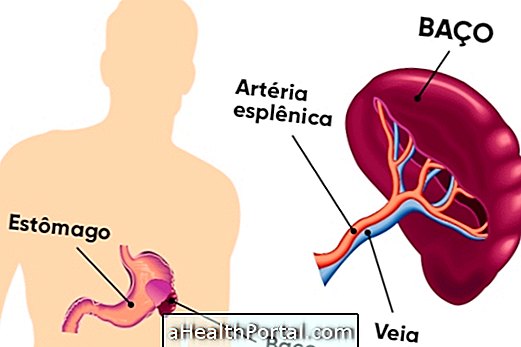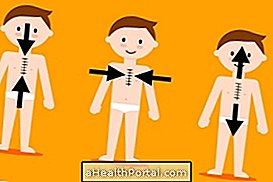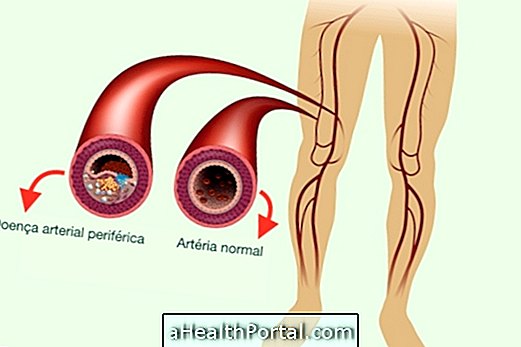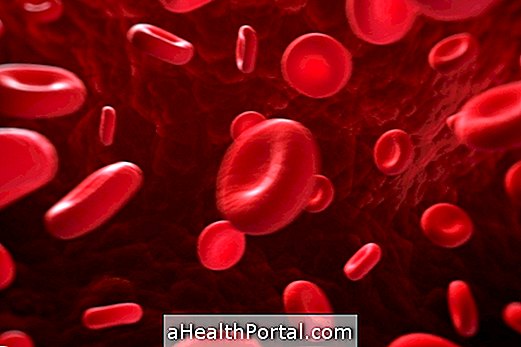Thyroid cancer is a type of tumor that most often has a cure when its treatment is started very early, so it is important to be alert to symptoms that may indicate the development of cancer, especially:
- Nodule or lump in the neck, which usually grows rapidly;
- Swelling in the neck due to enlarged gums;
- Pain in the front of the throat that can radiate to the ears;
- Hoarseness or other voice changes;
- Difficulty breathing, as if there was something stuck in the throat;
- Constant cough that does not accompany a cold or flu;
- Difficulty swallowing or feeling of something stuck in the throat.
Although this type of cancer is more common after the age of 45, whenever any of these symptoms appear it is recommended to consult an endocrinologist or head or neck surgeon to make diagnostic tests, identify if there is a problem in the thyroid and start treatment appropriate.
However, these symptoms may also indicate other less serious problems such as hyperthyroidism, hypothyroidism or just cysts or thyroid nodules, which are usually benign and pose no health hazard.
See also which signs may indicate other thyroid changes: Thyroid symptoms.

How To Diagnose Thyroid Cancer
To diagnose thyroid cancer it is advised to go to the endocrinologist to observe the individual's neck and identify changes such as swelling, pain or the presence of a lump. However, it is also important to perform a blood test to check the amounts of the hormones TSH, T3, T4 and thyroglobulin, which when altered may indicate changes in the thyroid.
In addition, it is necessary to perform an ultrasound of the thyroid gland or a biopsy to remove a small sample of the tissue and confirm the presence of malignant cells in the gland, which actually determines if it is cancer.
People diagnosed with low-risk thyroid cancer usually have normal blood tests, so it is as important to perform biopsies whenever your doctor says, if they indicate an inconclusive result, they should be repeated periodically until proven to be of a benign nodule.
Sometimes the certainty that it is a thyroid cancer only happens after doing the surgery for removal of the lump that was sent to the analysis laboratory.
What types of thyroid cancer
There are different types of thyroid cancer that vary depending on the type of cells that are affected. However the most common include:
- Carcinoma papillary: is the most common type of thyroid cancer, affecting 80% of cases, this usually develops very slowly, being the easiest type to treat;
- Follicular carcinoma: is a thyroid cancer less frequent than the papillary, but also has a good prognosis, being easy to treat;
- Marrow carcinoma: is rare, affecting only 3% of the cases, being more difficult to treat, having less chance of cure;
- Anaplastic carcinoma: It is very rare, affecting only 1% of cases, but is very aggressive, with little chance of cure.
Papillary or follicular thyroid cancer has a high survival rate, although it can be halved when the cancer is diagnosed at a very advanced stage, especially if there are metastases scattered throughout the body. Thus, in addition to knowing what type of tumor the person has, he must also know its staging and if there are metastases or not, because this determines which treatment is most appropriate for each case.
How To Treat Thyroid Cancer
Treatment for thyroid cancer depends on the size of the tumor and the main treatment options include surgery, iodine therapy and hormone therapy. In the most severe cases, chemotherapy and radiotherapy may be indicated, but all types of treatment are always indicated by the endocrinologist or head and neck surgeon.
- Surgery: Known as thyroidectomy, it consists of removing part of the thyroid or the entire gland, as well as emptying the neck to remove the lymph nodes in the neck that may be affected. Learn how surgery is done in: Thyroid surgery.
- Hormonal Replenishment: Following should be taken medications to replace the hormones produced by the thyroid, throughout life, every day, fasting. Know what these medicines may be;
- Radiation therapy: It may be indicated in case of medullary or anaplastic cancer, especially in an advanced tumor.
- Radioactive iodine intake: About 1 month after removal of the thyroid, the second step in the treatment of radioactive iodine, which completely eliminates all thyroid cells and consequently all traces of the tumor, must be started. Learn all about iodine therapy.
Watch the following video and know what diet to adopt to perform this treatment:

Chemotherapy is almost never recommended in the case of thyroid cancer because this type of tumor does not respond well to this treatment.
How is the follow-up after treatment

After treatment to remove a tumor from the thyroid, tests are needed to assess whether the treatment has completely eliminated malignant cells and whether hormone replacement is adequate for the person's needs.
The necessary exams include:
- Scintigraphy or PCI - Whole body scan: it is an examination where the person takes a medicine and then enters a device that generates images of the whole body in order to find tumor cells or metastases through the body. This test can be done 1 to 6 months after iodine therapy. If malignant cells or metastases are found the doctor may indicate taking a new radioactive iodine tablet to eliminate any trace of the cancer, but usually a single dose of iodine therapy is sufficient.
- Ultrasound of the neck: It can indicate if there are alterations in the neck and cervical ganglia;
- Blood tests for TSH and thyroglobulin every 3, 6 or 12 months, the goal is to have their values <0.4 mU / L.
Usually the doctor orders only 1 or 2 full-body scans and then the follow-up is done only with ultrasound of the neck and blood tests. Depending on the age, type and staging of the tumor, and the general state of health that the person presents, these tests may be repeated periodically for a period of 10 years or more, at the discretion of the physician.
Can thyroid cancer return?
It is unlikely that a newly discovered tumor can spread through the body, with metastases, but the best way to know if there are malignant cells in the body is to perform the tests the doctor requests, especially ultrasound and scintigraphy, and eat well, exercise regularly and have good habits.
However, if the tumor is aggressive or if it is discovered at a later stage, there is a possibility that the cancer may appear elsewhere in the body, with metastases being more common in the bones or lungs, for example.























